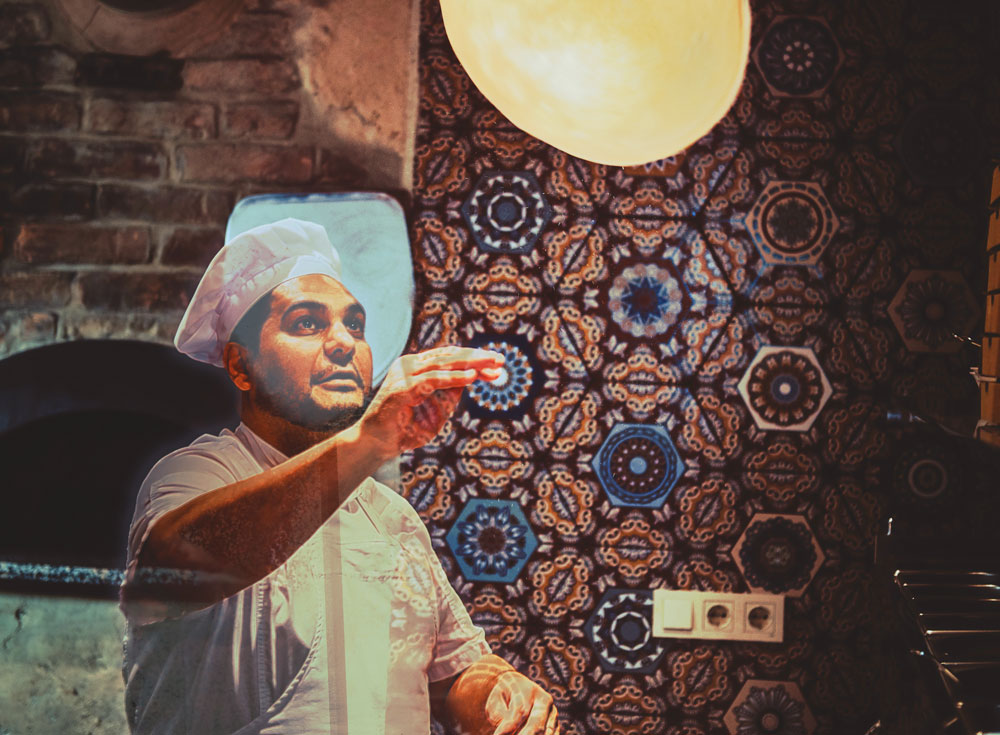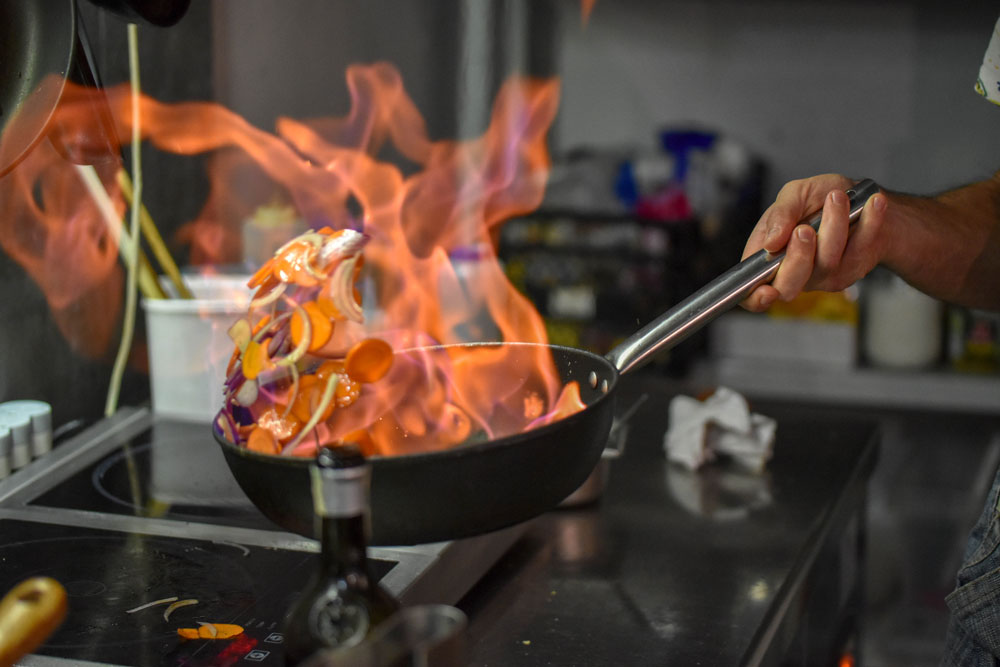- While ghost kitchens have been around for a number of years, their popularity skyrocketed during the pandemic, and those aftershocks will likely be felt for years.
- Ghost kitchens mark an important shift in how consumers relate to food and the experience of eating.
Related: Round Table Pizza opens ghost kitchen in L.A.
By Tracy Morin
With the pandemic limiting dine-in options and a nationwide labor shortage crippling businesses, restaurant operators have been waking up to the wisdom of ghost kitchens, which allow for lower costs and smaller footprints through virtual storefronts. “One of the main drivers of the growth of the ghost kitchen market is the changing cost structures of the foodservice environment,” explains Michael Schaefer, global lead of food and beverage at Euromonitor, a global market research company with U.S. offices in Chicago. “Ghost kitchens push restaurant cost structures toward delivery rather than in-person dining, and the reduction of employees that comes with a delivery-focused model can grow thin margins and significantly bring down rent and staffing costs.”
However, along with their many benefits, ghost kitchens also create unique challenges. How do you get the word out and win over customers without a physical location and the warmth of in-house hospitality? How do you stand out from the growing number of online competitors? How do you launch your brand if you’re working with a shoestring budget? Here, experts share their best advice on the potential and the pitfalls that surround ghost kitchens.
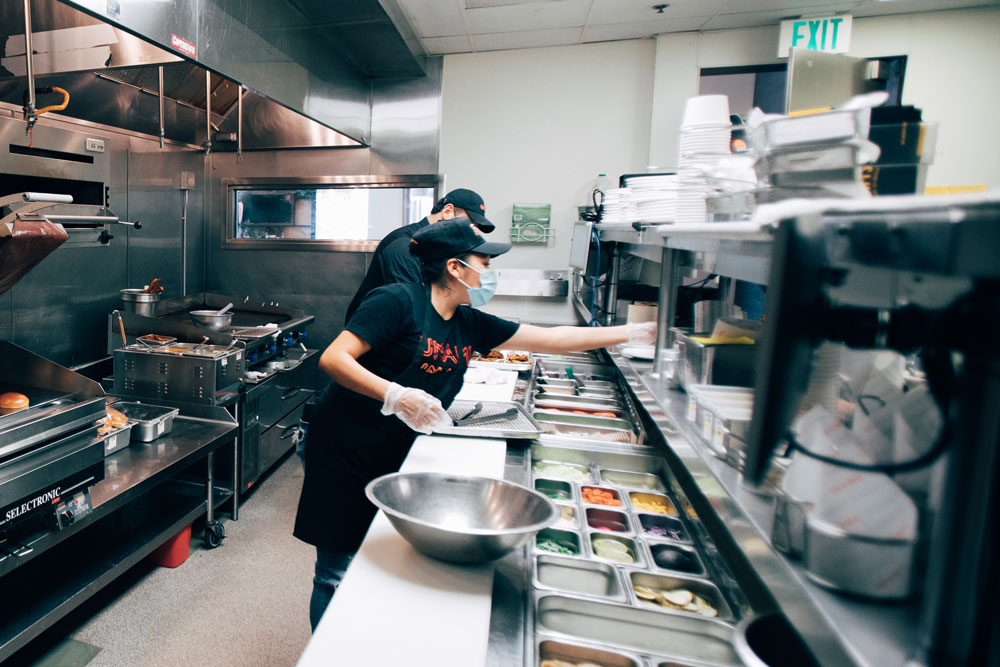
Photo by Mason Adams
“Ghost kitchens offer the ability to test a concept prior to making the larger investment of a dine-in establishment, and we’ve also seen examples of brands using ghost kitchens to evade poor reputations or reinvent themselves.”
— Megan Wintersteen, Zenreach
Cost-Benefit Analysis
Megan Wintersteen, VP of marketing at Zenreach in San Francisco, notes that while ghost kitchens have been around for a number of years, their popularity skyrocketed during the pandemic, and those aftershocks will likely be felt for years. “We saw significant increases in delivery and takeout orders across 2020 and into 2021,” Wintersteen says. “Because humans are creatures of habit, we expect that new routines created during the pandemic will likely keep delivery rates higher than pre-pandemic levels as recovery continues.”
She points out several advantages to the ghost kitchen model: An operator requires less up-front investment in real estate, due to no dine-in, and in tangible items like menu printing, table settings and decor. “Operationally, ghost kitchens often allow food to be prepared more quickly and offer greater menu flexibility,” Wintersteen adds. “From a branding standpoint, ghost kitchens offer the ability to test a concept prior to making the larger investment of a dine-in establishment, and we’ve also seen examples of brands using ghost kitchens to evade poor reputations or reinvent themselves.”
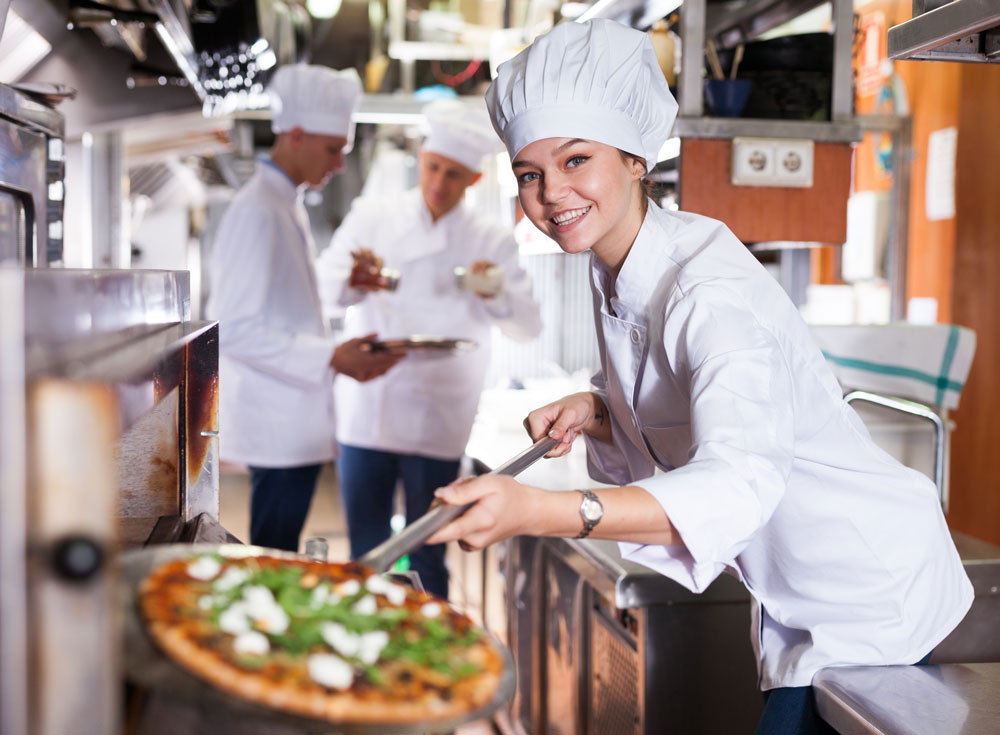
Since modern-day trends can evolve literally by the minute, ghost kitchens mark an important shift in how consumers relate to food and the experience of eating, according to Miriam Aniel, head of content and research at Tastewise in Richmond, Virginia. “Through lower overhead costs and a delivery-only model, virtual restaurants are able to pivot quickly to address changing consumer tastes,” Aniel notes. “Is there a new dessert that customers are rumored to love? Add a creative version of it to the menu. Did that pizza topping fall flat? Take it off. Chefs in ghost kitchens are able to experiment with new ingredients and dishes with less risk of fallout than in traditional restaurants.”
Related: Welbilt ghost kitchens help restaurants expand during the pandemic
Ghost kitchens can also cater to customers in thriving neighborhoods—without operators paying the high rents to score space there. “Virtual restaurants with expansive delivery options allow brands to rent kitchen space, often shared, in low-cost areas, slashing the costs of both the location and the support staff,” Aniel explains. “No customers dining in means no waiters, management, bussers, etc.”
Similarly, Bryan Cromwell, COO of Veneto Hospitality in Austin, Texas, which owns the ghost kitchen Benvolio’s, appreciates the ability to expand the reach of his business with delivery to new areas where people may know the brand but are reluctant to travel a long distance for it. Setting up a ghost kitchen allows him to test a new geographical market before launching a brick-and-mortar there.
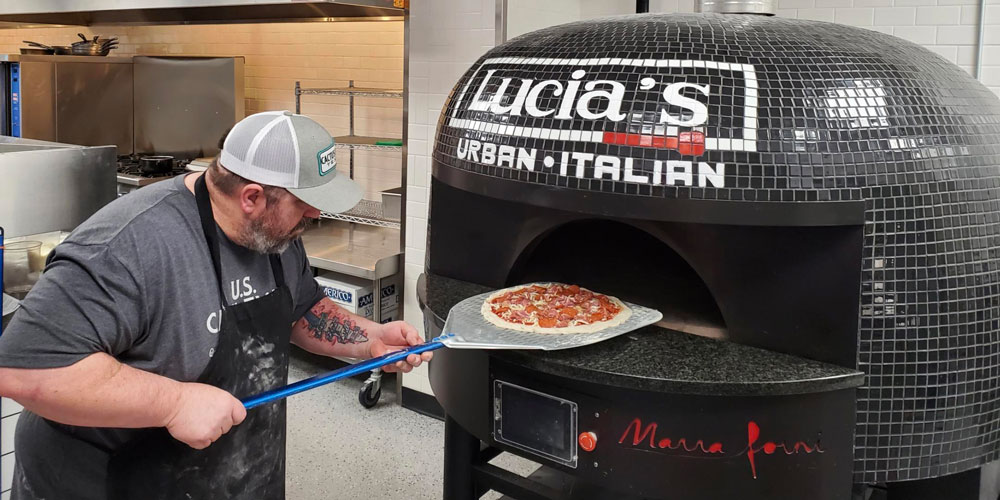
Gene McWilliams, owner of Kitchens Unlimited in Effingham, Illinois, operates three concepts in his ghost kitchen: Lucia’s Italian Kitchen, Geno’s Grill and Southern Illinois Burger Co.
Shared Spaces
Though ghost kitchens offer myriad benefits, they still require basics associated with traditional restaurants. For example, Cromwell emphasizes that these kitchens, while less expensive, still have significant costs, including rent, advertising, and product and equipment purchases. What if you’re a newcomer starting on a shoestring budget? “You could identify someone currently in a kitchen but underutilizing it, and partner with them to launch,” Cromwell recommends. “Many ghost kitchens can support multiple concepts in a single kitchen, if the equipment and storage are compatible with your pizza concept.” For example, maybe someone in the area runs a breakfast operation that closes by afternoon, so you can run a pizza concept in the same space in evenings. “You would be able to cross-utilize cooler and counter space and perhaps only have to buy a pizza oven, reducing your cost and barrier to entry,” Cromwell says. “Then you split rent and fixed overhead costs, making it better for both parties.”
Indeed, Joey Simons, senior vice president of operations of Miami-based Creating Culinary Communities (C3), notes that the pandemic exposed how grossly underutilized kitchen spaces are, especially in hotels and select-service restaurants. “Pre-pandemic, C3 observed most hotel kitchens were operating at just 15% to 20% efficiency—and these are kitchens in prime locations,” Simons says. “One idea is to run multiple brands out of a single kitchen and cross-train the same team to be able to cook cuisine from all concepts. This allows restaurants the ability to maximize operating efficiency, provide more robust customer-facing services, streamline internal services and maintain a low capital spend. As rents and labor become more expensive, the digital kitchen model offsets those costs.”
Therefore, Simons believes that finding a ghost kitchen space where other food brands or restaurants operate is key. A digital kitchen with six to eight brands operating out of a single space can generate a significant increase in revenue and has the potential to reach new demographics because of the increased diversity in options for customers.
Alternatively, ghost kitchens also allow a single operator to offer a variety of his own brands under one roof. That’s the route chosen by Gene McWilliams, owner of Kitchens Unlimited in Effingham, Illinois, which opened in November 2020 with three virtual concepts, including the pizza-focused Lucia’s Italian Kitchen. “While a lot of ghost kitchens are landlord-based—you may rent out 500 square feet and operate with third-party delivery—we own all of the restaurants and the delivery team; we don’t use third-party,” he explains. “We’re running three restaurants out of one shared kitchen, and customers can choose from all of them in one order.”
Because McWilliams wants to build more of a “chef-driven” brand, this format allows him to test the waters on new concepts—and, if one isn’t working, to change it on a moment’s notice. That said, even though ghost kitchens offer unique advantages, McWilliams stresses that many aspects are just as difficult as with brick-and-mortar operations—after all, you still need to master core aspects like marketing, accounting, menu items and overseeing staff.
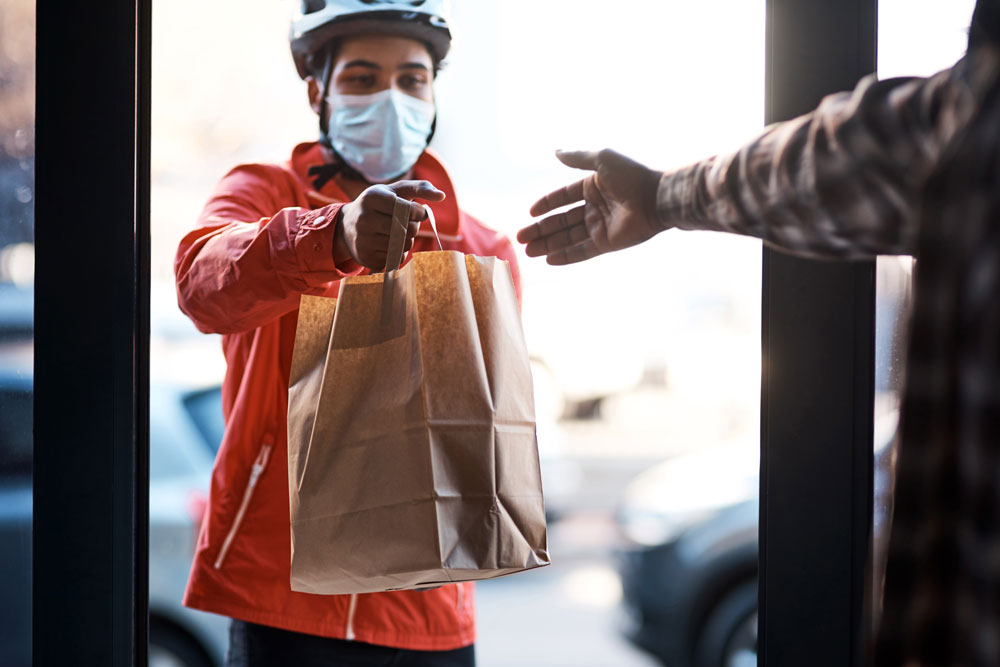
Nailing the Digital Details
When you don’t have a storefront to entice customers—and potential patrons won’t be tempted by menu items traveling through the restaurant on the way to tables—having a strong digital presence is paramount. Wintersteen notes that third-party delivery services will be key in helping increase awareness for new operators. But, adds Michael Parlapiano, creative director of The Culinary Edge in San Francisco, exposure from third-party services will only go so far. “When people aren’t driving by your location, you have to approach your branding and marketing in a very serious way—it becomes more about search engine optimization and digital and social media strategies to connect with customers,” he says. “Just as people eat with their eyes first, the same goes for your brand: You need unique features to distinguish yourself from others. Create a cohesive esthetic in tone, name and design; have a strong sense of what your brand stands for and your values; and consider the ways to communicate that, from your photography to social media to packaging. Invest in your design to appeal to the specific customer you’re going after.” Then, as you build a loyal fan base, review that customer data to learn more about the people ordering from you and how you can better target them.
Wintersteen believes that improving your digital presence should involve a two-pronged approach: your owned channels (i.e., website and social media), which should reinforce the brand and provide customers with relevant information; and third-party channels (your profiles across third-party delivery services, Google My Business, Yelp, etc.), which should be as simple and built-out as possible. “Using your website and social media to give the brand a personality, tout specials and promotions, and even provide a behind-the-scenes look at your operation are all ways to increase transparency with the customer,” Wintersteen says. “Fostering relationships with customers, without a dine-in experience, is much harder to achieve.” In addition, regardless of the length of your menu, Wintersteen suggests making it “digestible”—include top-notch visuals through photography and clear sections to make it easier to scan and order from.
Finally, keep in mind that in some areas, customers might not even know what ghost kitchens are all about. McWilliams, located in a rural town of 18,000, notes that there has been a learning curve with locals who are used to calling a pizzeria and asking about the day’s specials, versus ordering online and scrolling pics on social media. “We post daily on social media, like Facebook and Instagram, but really Google is the most important,” McWilliams says. “When people search for pizza or restaurants near them, SEO is huge. You want to pop up in those first couple of results. Ask your customers to review you on Google, not on Facebook. Photographs are huge, too—when people see mouthwatering images, they feel like they need to try you.”
Tracy Morin is PMQ’s senior copy editor and the editor of PizzaVegan.com.
Small Bites
Experts share quick tips for successful ghost kitchens.
“Bring the same customer attention to the online space that you would bring every day to a brick-and-mortar space. Engage with local events, partner with local online influencers, run Instagram contests—and really emphasize all of that in your online presence. Virtual restaurant owners who view their work not as transactional, but as relationship building, will have both loyal customers and a competitive edge.”
—Miriam Aniel, head of content and research, Tastewise, Richmond, VA“Engage influencers and have lots of content to share. As you build, ask guests to leave good reviews, and answer any bad ones quickly. Working with third-party delivery, know the reputation of the companies you choose and how their drivers treat your products. Put in place measures such as safety seals, and be sure to use good takeout packaging that will hold up to transportation, hold in heat and make a good impression on the receiver. Treat all of the drivers you encounter with respect so they, in turn, will respect you and the product you serve.”
—Bryan Cromwell, COO, Veneto Hospitality, Austin, TX“Invest in some merch so people can see your brand wherever they look. Start personally engaging with your audience: Use polls to let your following decide your newest specials or flavors. Ask for feedback, run ‘Ask Me Anything’ sessions, and DM your best customers and begin to build relationships with them. I even self-deliver on a designated day or set up pickup dates, because face time with your customers is clutch. You’re already a faceless entity, being cloud-based, so you need every opportunity you can get to personally connect with your customer and say, ‘Thank you for your support.’ Human connection goes a long way in this day and age.”
—Ashley Burk, Steady Hand Cafe & Collective, Spring Lake, NJ

